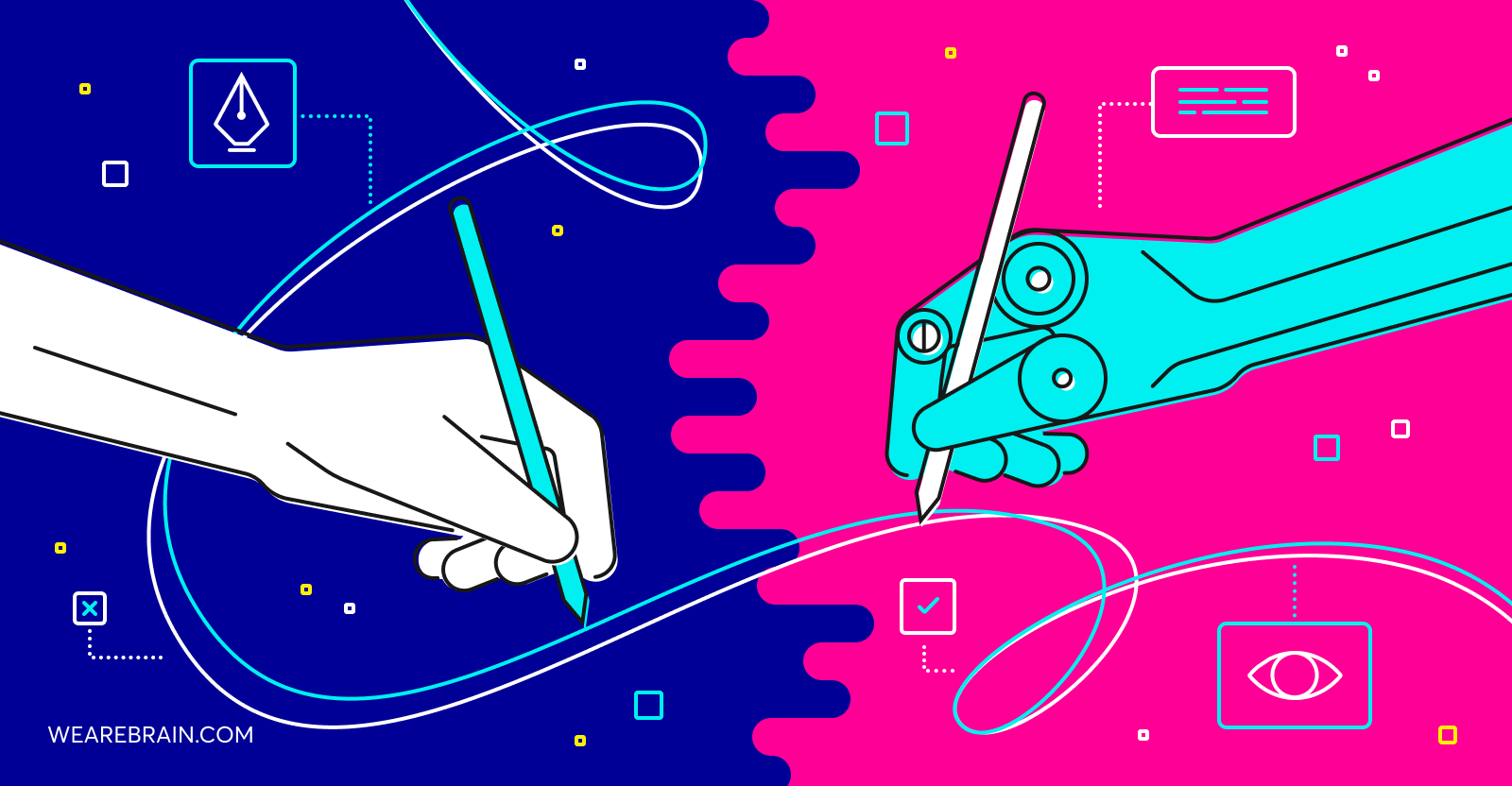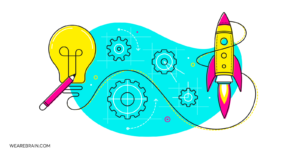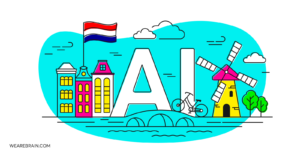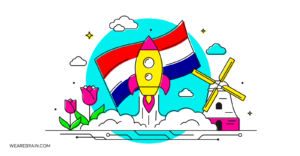Creative algorithms: AI’s influence on design

AI’s involvement in the creative space isn’t anything new — we’ve seen the rise of AI-powered faux influencers, musicians, artists, and novelists. Even marketing agencies are leveraging AI to generate creative content. Now, AI is entering the design space and helping designers to create and streamline processes for quicker turnarounds.
If you’re a designer, there is no need to panic about the idea that AI is going to replace you because that is not the case. Rather, AI in design is focused on working together with designers to make their work easier and more efficient.
Let’s take a look at how AI is making an impact in the design space.
How AI benefits designers
Designers use AI-powered programs that assist with various common design presets, such as determining margin width or choosing layouts, typefaces, and colours. Currently, AI in design focuses on optimisation and speed, reducing the time between concept, development, and release.
Efficiency
AI in design is also used to analyse lots of input data to generate design suggestions and recommendations based on Machine Learning (ML) principles. Once the results are presented, designers are able to pick and choose from the options which serve to kick off the creative process. This reduces the time it takes during the initial stages of concept development.
Variations
Famously, Nutella leveraged AI’s ability to decipher, generate and print unique images for a unique brand campaign that resulted in 7 million unique jar designs. Designers used an algorithm that pulled hundreds of patterns and colours from a database which generate each design. The campaign and the packaging were so successful it resulted in over 10,000 consumer videos and all jars selling out entirely within 30 days.
Personalisation
With AI and ML, UX-UI designers can create websites and applications to provide users with tailored experiences that show only relevant content according to their online behaviour (search history, demographic, preferences, etc.). This results in a customised newsfeed that is unique to each person, enhancing the user experience.
Challenges of AI in design
AI cannot replace human creativity
Even in an age of automation where websites, layouts, and logos can be created by data-eating algorithms, the need for human-centric design still remains the lifeblood of creativity. AI-powered tools only assist with repetitive, rules-based tasks. Designers are still required to define and create the experiences and emotional evocations that good design is intended to deliver.
Templates become imitative, repetitive, and unimaginative very quickly. Design is inherently a human process created by people for people. Creative design speaks to us on an emotional level, filled with nuance and subtlety that taps into the human experience. As a result, AI-powered creative tools and algorithms are unable to create designs that speak to us on a human level.
Poor problem solving
Good design involves framing a problem and finding the perfect solution. A designer’s responsibility is to create empathetic designs that consider the end-user and help them achieve their goals. Design empathy is gathered from human experience and research that helps lead the decision-making process. Currently, algorithms are incapable of working in a human-centric approach that factors all the variations of emotional and cognitive drivers.
Final word
Just like in any other industry, AI is helping to improve the speed and efficiency of rules-based, repetitive tasks in the design space. However, smart technologies are not about to jeopardise human creativity (yet) as they lack the cognitive foundations and key emotional drivers that makeup design principles.
As AI continues to disrupt the design space, the role of creatives will also evolve. Yes, the role of today’s designers will undoubtedly change in the future thanks to AI, but the change will see how designers embrace new technologies to find better solutions to problems.
Martijn Hinfelaar
Working Machines
An executive’s guide to AI and Intelligent Automation. Working Machines takes a look at how the renewed vigour for the development of Artificial Intelligence and Intelligent Automation technology has begun to change how businesses operate.







